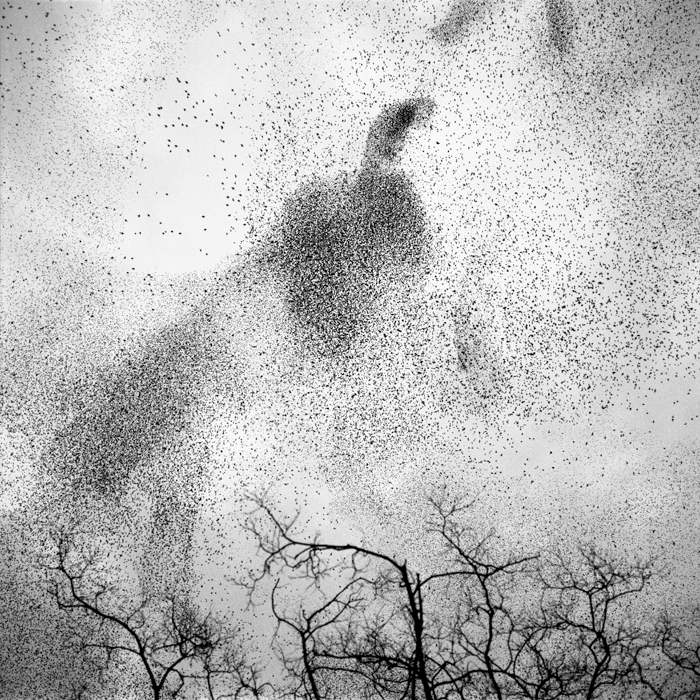Starlings by Paolo Patrizi
Many thousands of birds wheeling through the sky above Rome at sunset prepare to roost together for the night, providing both breathtaking aerial displays and a public nuisance in the form of noise and bird droppings.
A starling flock like this is called a ‘murmuration’, a word that perfectly describes the rustle of thousands of pairs of wings. The coordinated evolutions of large flocks of starlings at dusk is one of the great wonders of nature. Such flocks remain incredibly cohesive under attack by predators, never leaving a bird isolated. When attacked, the birds will spread apart; at other times, when the flock is making a directional change, they will merge closer together. They perform these incredible manoeuvres but they are always integrated with the flock, no matter how drastically they change the flock’s shape and intensity.
After an attack has taken place, and the flock has expanded, it can regroup quickly because cohesion does not depend on the distance between the birds. Interaction is based upon the number of their fellow neighbours rather than their distance apart, which implies complex cognitive capabilities in these birds.
These findings may have implications for the study of other animal groups and indeed human behaviour. It is thought that the birds’ behaviour could reflect the herding responses in human beings – with a particular eye on stock-market panics. Individual people coordinate and imitate each other to create collective phenomena. People are extremely influenced by their neighbours, by fashions and fads.
Paolo Patrizi is a Tokyo, Japan based photographer.
To view more of Paolo's work, please visit his website
















